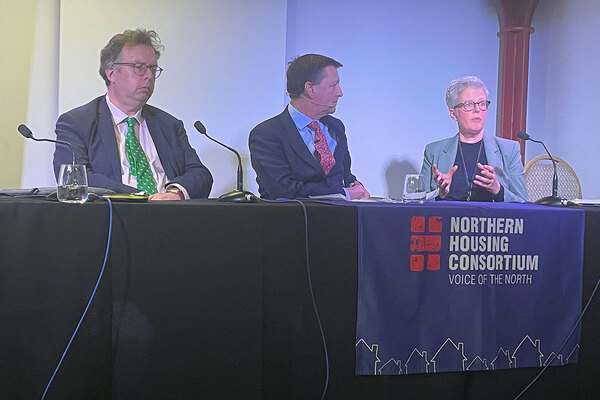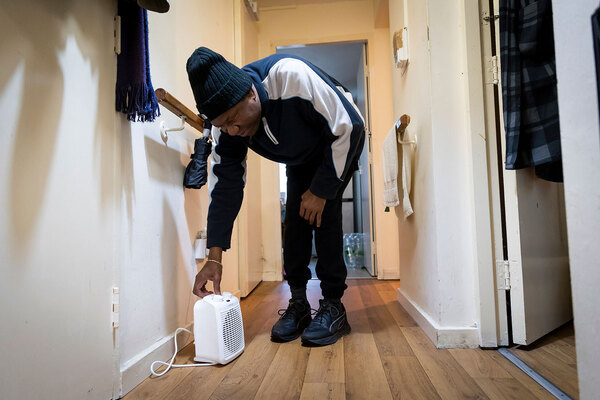You are viewing 1 of your 1 free articles
Complaint-handling must put people before process
Ian Hembrow argues that in light of the Awaab Ishak tragedy and the regulator’s new tenant satisfaction measures, it is time for housing associations to put customers at the centre of their actions when services fail
A housing association head of communications recently told me that they thought staff were “fearful of being compassionate” in the way they responded to complaints from customers. I knew exactly what she meant: it’s something that is plain to see in the way many organisations communicate when something has gone wrong.
Such fear highlights a wider problem as providers face increasing levels of dissatisfaction and seek to comply with the Housing Ombudsman’s complaint-handling code. Introduced in 2020, the code sets out several entirely reasonable requirements for how social landlords should handle complaints. But its heavy emphasis on process encourages too many to produce cold, defensive and soulless responses (especially in writing) that help no one.
This isn’t all down to the ombudsman’s code, but it certainly appears to have aggravated a cultural tendency towards an opaque ‘never apologise, never explain, never admit liability’ mindset.
More positively, the code says: “Any themes or trends should be assessed by senior management to identify potential systemic issues, serious risks or policies and procedures that require revision.” So we live and work in hope.
In the past two years I’ve worked with teams from several organisations who’ve recognised this issue. The best of these have resolved to take a more human approach focused on the needs and circumstances of individual customers. They have also given their employees full permission to express their personalities and the empathy that originally led them to work in housing.
But, overall, I fear the sector has gone backwards in this area in recent years. When it comes to complaints, housing is falling behind the norms and standards we all expect elsewhere.
A statement from Rochdale Boroughwide Housing pinpoints this slide as part of the prolonged inaction that led to the death of two-year-old Awaab Ishak. “There are hard lessons to learn: process must never get in the way of people,” it read.
“It is time to put customers back to the top of what we think, say and do when services fail or mistakes happen”
In light of that tragedy – plus the regulator’s new tenant satisfaction measures and the daily reality that people’s lives are tough and getting tougher – it is time to put customers back to the top of what we think, say and do when services fail or mistakes happen. Responses need to be not just compliant and fair, but actively decent, sensitive and humane. Replies to complaints should represent the very best communication that providers are capable of.
In training and coaching sessions I often cite a list from the International Customer Service Survey. It ranks 11 things that matter to customers (in any industry) when there’s a problem with a product or service. Many people are surprised to see that fixing the source of the complaint (for example, by replacing or repairing the faulty item) comes seventh.
The top six are all about what might be regarded as the ‘soft side’ of customer relations: speed, apology, treatment, acknowledgement, explanation and assurance that the problem won’t reoccur. In fact, these are the hard points of effective complaint-handling. They’re the crucial elements that will hurt you and your customers if they’re neglected.
Last month I read another housing group’s statement on how they had met the complaint-handling code over the previous year. It was clear and nicely presented, confirming that the organisation had observed every one of the obligations. And yet the actual replies being sent to customers by the same organisation were stuffy, impersonal and disempowering. These letters were damaging relationships and reputations every time each leaden, standard paragraph and phrase was repeated.
The vocabulary around complaints is itself problematic. Rigid replies that ‘uphold’ or ‘reject’ customers’ feedback create an unnecessary knife edge of conflict. And who can blame unhappy residents for continuing to complain when replies and policies talk about ‘Stage 1’, ‘Stage 2’ and ‘escalation’?
“Every response to a complaint is an opportunity to demonstrate that you’ve listened, value what the customer has told you and commit to what you’ll do about it”
A director from one of the housing associations I’ve worked with on this topic wrote in a recent LinkedIn post: “At the centre of every case is a person, a customer. So from now on, our teams will eradicate ‘case’ from our terminology as ‘cases’ only belong at an airport!”
I completely endorse this approach – every response to a complaint is an opportunity to demonstrate that you’ve listened, value what the customer has told you and commit to what you’ll do about it.
The start, middle and finish point for complaints must be the unique context of each individual and the specific situation that faces them. Template replies, no matter how well written (and most aren’t), can never be fit for purpose. Whether dissatisfaction is justified or not, customers have a right to expect replies that are swift, personal, courteous, considerate and kind. Staff also deserve the right to be caring and human in their work.
We need to remember that housing is a people business.
Ian Hembrow, senior consultant, Creative Bridge
Sign up for our regulation and legal newsletter
Already have an account? Click here to manage your newsletters











